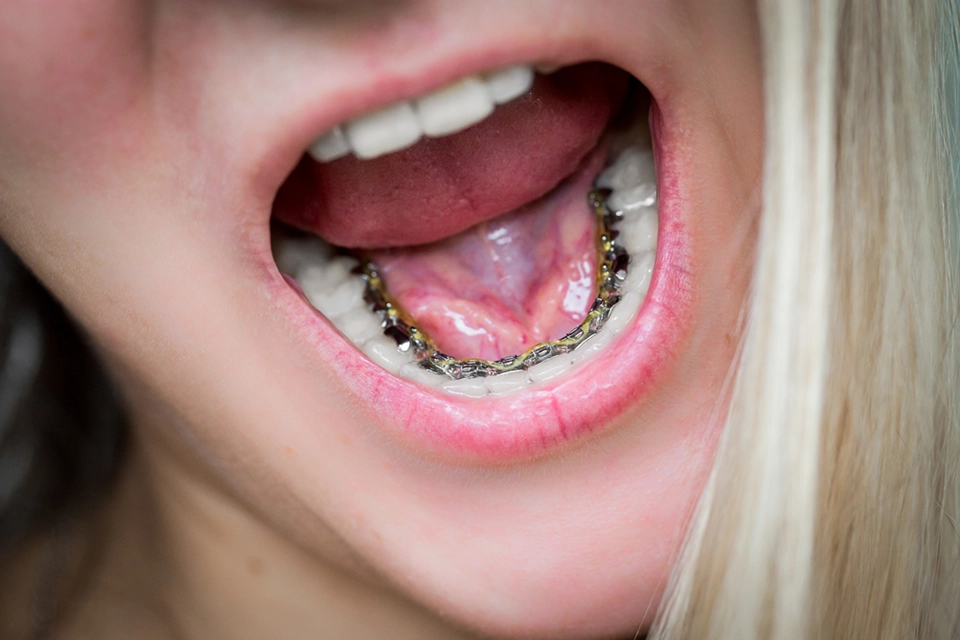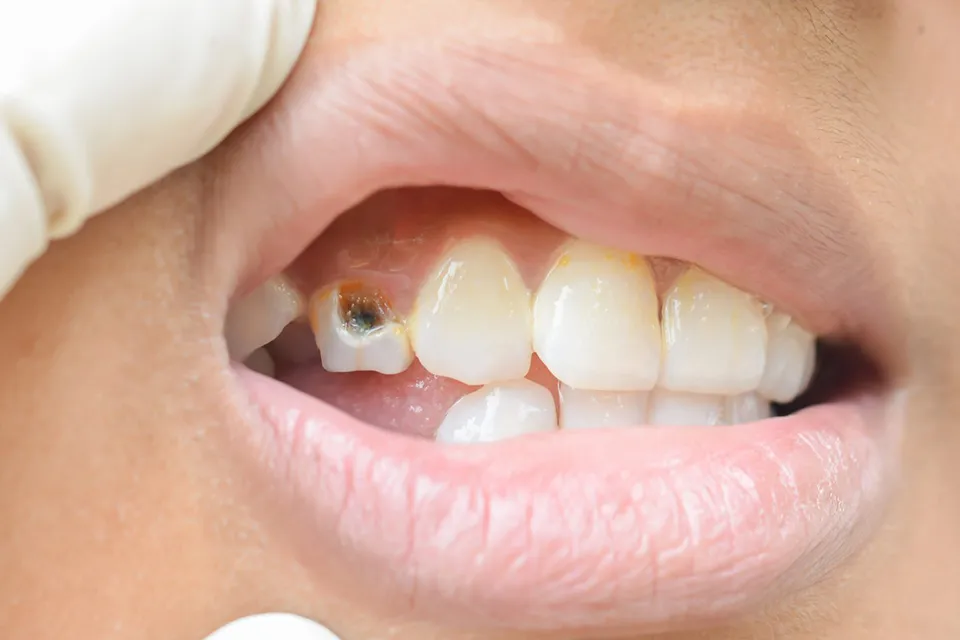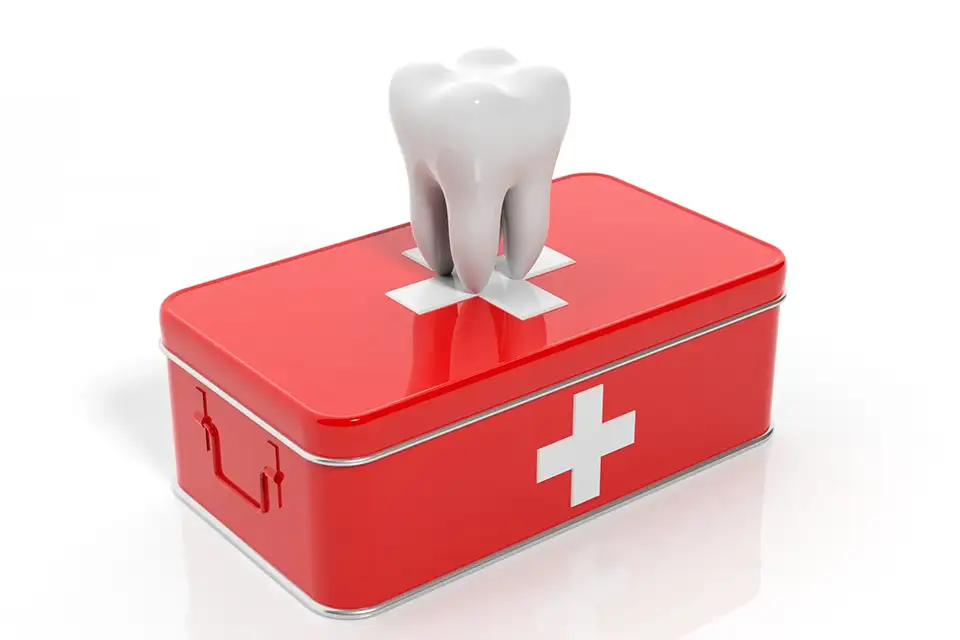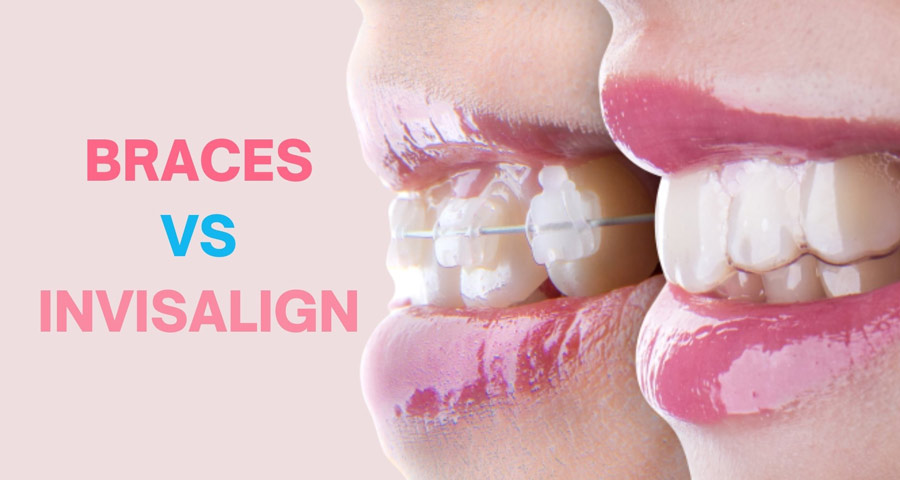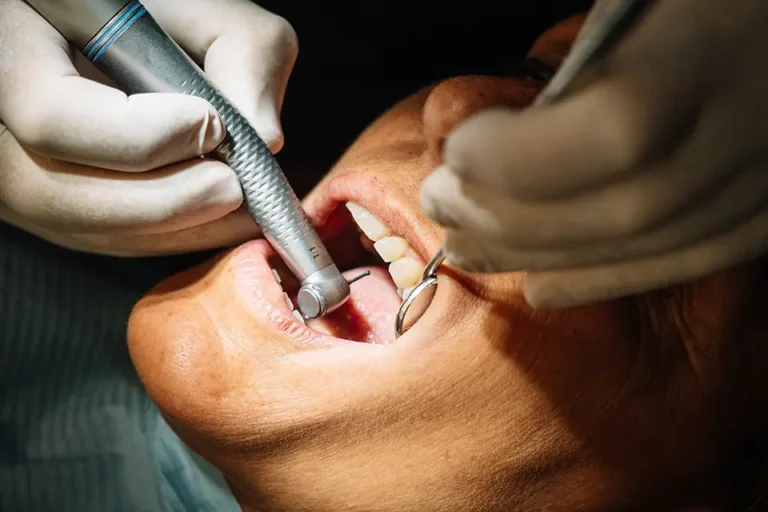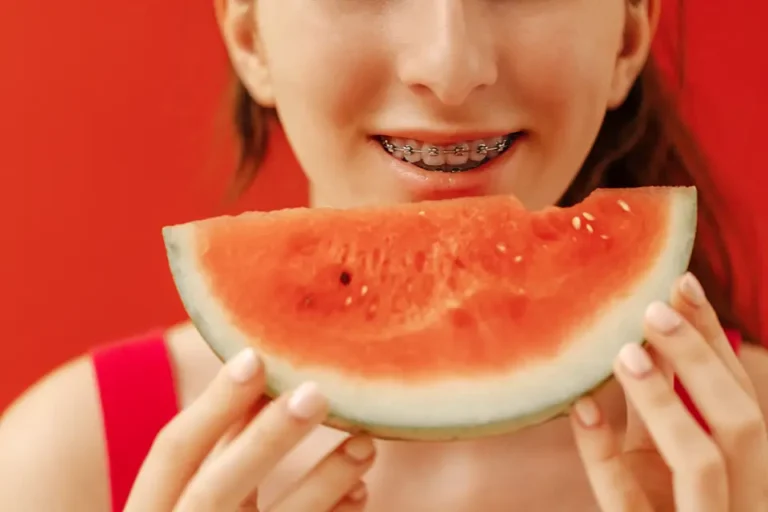Did you know that a straight smile is key to overall wellness and longevity? If you’ve ever wondered whether your teeth need correcting, the answer is likely yes … but how? You’ve likely heard of both braces and Invisalign. While these two orthodontic approaches are elementary to dentistry professionals, most people aren’t clear on the mechanics of each, nor their pros and cons. Today’s post will help.
Traditional Dental Braces
The question of how braces work is paramount, so let’s start there. The dental braces treatment and process is pretty familiar to most of us: individual brackets glued to teeth with a wire running through them.
The angle, gauge and placement of the wire work together to move teeth into a more desirable position. Orthodontists will apply your braces, then see you monthly to adjust the wire so that it continues to move teeth where they need to go. That’s the basic explanation for how braces work.
There are several types of braces. Brackets can be made of metal or ceramic. They may be held to teeth with small rubber bands or with little “doors” or clips. These types all go on the front of the teeth, while lingual braces go on the back.
Because this is a difficult approach, you’ll have a harder time finding someone to do this for you, and it will likely cost more.
Invisalign
As the American Dental Association explains, abnormal bites and disorderly teeth are associated with higher levels of tooth decay and loss, gum disease and jaw problems, worn-down enamel and even speech problems.
So even if you don’t want to get traditional braces, you can still gain a lot of benefit from teeth correction.
Invisalign is the last method for correction bite and teeth placement, a clear plastic mold or “tray” that fits around your teeth and applies targeted pressure. It has become popular in recent years for two main reasons: it is removable and it is inconspicuous.
You wear it all day and night, taking them out only to eat, drink, brush your teeth and conduct other activities for which they’re inconvenient.
Main Differences Between Braces and Invisalign
While your dentist and orthodontist can help you sort through your options and find the one they think is most likely to help you, you have a say as well. Factors like where you work and how you spend your day, as well as what your teeth are like, can help you settle on the best option.
Here are some of the main differences between the two treatment approaches.
Use cases: Wondering who needs braces and who will benefit more from Invisalign? The main differentiator is how much correction your teeth need. Invisalign is great for cosmetic adjustments and small realignments, but it isn’t strong enough for extensive treatment plans. For that, you’ll need brackets and wire.
Length of treatment: The length of the braces treatment plan versus Invisalign isn’t one-size-fits-all, but the latter is typically shorter.
Braces are usually between 18 and 24 months, while Invisalign ranges from 6 to 12 months (or more).
Longevity of appliance: Unless there is an accident, your brackets will last the entire length of your treatment. Invisalign trays must be replaced at regular intervals to keep adjusting your teeth.
Maintenance and cleaning: Eating is definitely cleaner with Invisalign. You can take the molds out at will, clean them and pop them back in after you eat.
Braces stay on always, which means the brushing and flossing requirements are more demanding. However, you have to track your trays while they’re not in your mouth.
Best candidate for each: The best candidate for Invisalign is someone who has limited needs, often cosmetic, usually an adult. Braces are best for those with extensive needs, or children whose teeth are still coming in and change more.

Pros and Cons of Each Treatment
Invisalign pros include simplicity of dental care and the ability to remove trays whenever you like, for eating as well as special events where you want to look your best.
Invisalign cons, however, are that you can lose trays or accidentally throw them away, they’re expensive and they often aren’t covered by insurance – as when they’re cosmetic.
Braces pros include better results, especially for those who have extensive needs, and the fact that you can’t lose them. On the other hand, braces cons are not insignificant: gum and mouth pain, cavities around brackets, irritation of a 24/7 appliance in your mouth and a longer treatment time.
Cost of Dental Braces Vs Invisalign
Overall, the cost of Invisalign is considerably higher than braces cost. Typically Invisalign cost ranges between $3,000 and $6,000, while braces cost is closer to $2,000 and $5,000 range.
Another thing to keep in mind about the cost of Invisalign is that it’s usually not covered by insurance, though if you need correction for your health, it may be.
Typically, those with braces have extensive enough needs that they can cover the position of their treatment cost through insurance or membership/discount plans.
Usually your orthodontist will provide some kind of a financing plan along with your treatment plan for either braces or Invisalign. Before you embark on your treatment plan, speak with the office about how they could break down costs for you month-by-month. Or if they offer any membership plans that can help in reducing the cost.
Insurance options for both braces and Invisalign depend on your insurance carrier and what the clinic takes. It’s best to talk to the carrier first and then bring that info to your care provider.
Braces: How They Work?
A quick step by step guide to your dental braces journey:
1: Your orthodontist will consult with you for your treatment options, plan, and cost.
2: A mold of your teeth is created to design the brackets and wires.
3: Your orthodontist places your brackets and wires
4: Each month, you’ll get an adjustment to keep your teeth moving.
5: You are to be sure that you are maintaining and cleaning your braces.
6: Getting comfortable with your braces
7: Remove your braces and enjoy the smile you’ve been dreaming of.
The Invisalign Treatment Journey
The Invisalign treatment is similar to that of braces in that it moves your teeth incrementally, explains the American Association of Orthodontists. Due to their similarities, the steps for getting Invisalign are somewhat similar to those for getting braces. They are as follows:
1: Consultation with an orthodontists comes first
2: A treatment plan in created for your Invisalign journey
3: Molding your teeth to create trays.
4: Wait for your aligners to be made and shipped
5: You will be scheduled to see your orthodontists to have your aligners placed
6: Monthly visits to assess your progress to see if any refining of your smile is needed.
7: The end is different because there is nothing to remove … you’re just done! Just maintain and smile bi.
Braces FAQ
Can insurance cover the cost?
Unless the braces are purely cosmetic, dental insurance and some health insurance plans will usually cover them.
What are the benefits of braces?
Straighter teeth, a stronger bite, less jaw trouble over time, cleaner teeth and gums and a prettier smile!
Do braces come in any color?
Yes! You can find a huge variety of hues at your orthodontist’s office, including neutral ones that blend into the teeth.
Can I get braces at any age?
Pretty much, though if you are a senior you’ll need to ask your care provider to be sure.
Can I brush with braces?
Yes, and it’s fairly straightforward. Your orthodontist will let you know the best ways to do so.
Invisalign FAQ
Can anyone get Invisalign?
There are many variables involved in understanding who is the best candidate for receiving Invisalign vs braces.
If your teeth need extensive correction, or that they’re the wrong shape. Having large gaps or significant overcrowding, all these could limit you in receiving Invisalign.
Therefore the best way to find out if you should get an Invisalign is to schedule an appointment with your orthodontist to consult about this matter.
Can Invisalign fix crooked teeth, underbites and overbites?
Yes! It is very effective at all three.
Can I get Invisalign at any age?
Invisalign is the best for adults of any age. Since they are more discrete and can be removed at any time.
Can I eat with Invisalign?
Unlike braces that you can’t remove while eating, it’s best that you remove your Invisalign while eating. This helps to keep them clean and pristine.
Can braces be combined with Invisalign?
Sometimes. If your needs can be met with a combination, that may reduce the time you have to wear highly visible braces.
Braces Vs Invisalign: The Conclusion
The decision about which alignment treatment to get really is different for everyone.
Your teeth, time, lifestyle and your desires of a better smile all play big roll in deciding when to get your treatment and who your dental care should be.
Either way, you can’t move forward without contacting the experts, so that’s the next step.
A treatment coordinator can help you get one, answering your questions and setting up a plan to help you get a better idea of your care, cost and financing.
If you’re ready to schedule an appointment, visit our site and book your next dental appointment in Houston, Texas!



